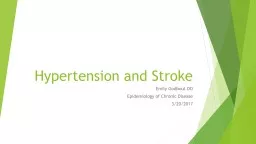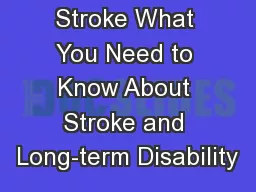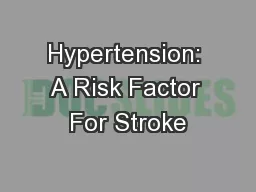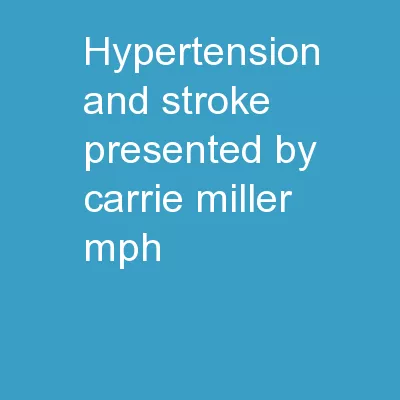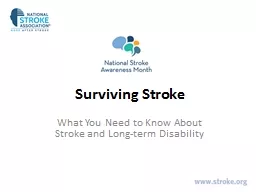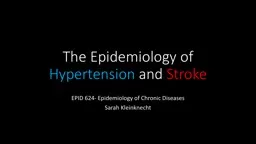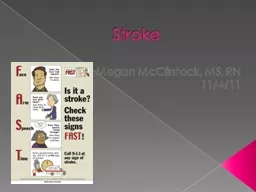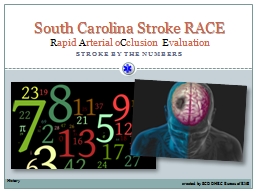PPT-Hypertension and Stroke Emily Godbout DO
Author : trish-goza | Published Date : 2018-11-08
Epidemiology of Chronic Disease 3202017 Objectives Remington et al Chronic Disease Epidemiology and Control 2010 BACKGROUND Incidence and Economic Burden 1 in 3
Presentation Embed Code
Download Presentation
Download Presentation The PPT/PDF document "Hypertension and Stroke Emily Godbout DO" is the property of its rightful owner. Permission is granted to download and print the materials on this website for personal, non-commercial use only, and to display it on your personal computer provided you do not modify the materials and that you retain all copyright notices contained in the materials. By downloading content from our website, you accept the terms of this agreement.
Hypertension and Stroke Emily Godbout DO: Transcript
Download Rules Of Document
"Hypertension and Stroke Emily Godbout DO"The content belongs to its owner. You may download and print it for personal use, without modification, and keep all copyright notices. By downloading, you agree to these terms.
Related Documents

